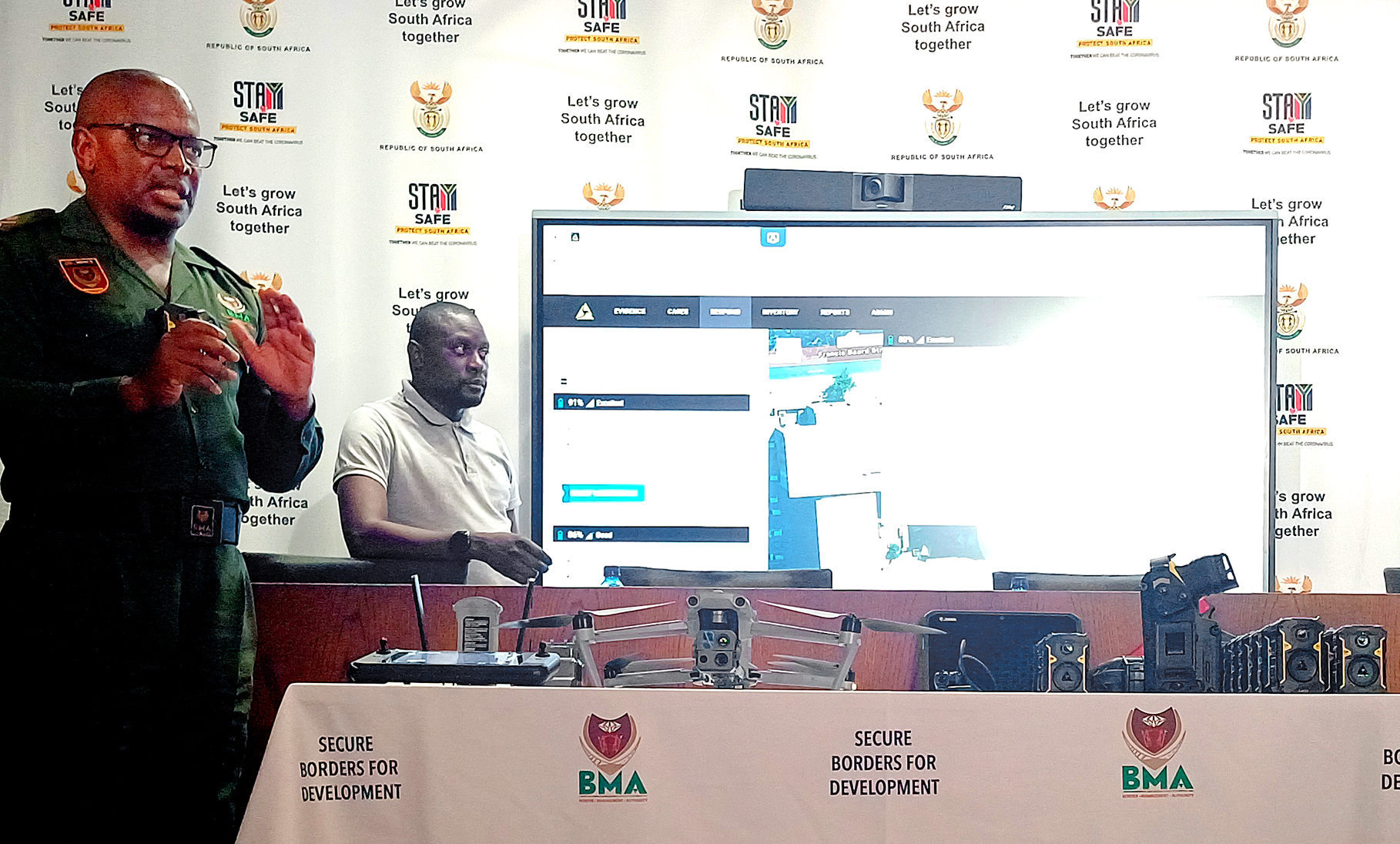With the Easter season around the corner, the Border Management Authority is embracing technology to help manage the increased movement of people that the festive period brings with it. For the first time, it will now have four eyes in the sky and 40 body-worn cameras to assist in managing the movement of people and goods at South Africa’s borders.
This was revealed by Home Affairs Minister Leon Schreiber during a media briefing and demonstration on the association’s readiness for the Easter period in Pretoria on Thursday, 10 April 2025. Schreiber explained that the use of four drones for border security was trialled during the festive season in December, resulting in a 215% increase in the interception of people attempting to enter the country illegally, as well as the successful arrest and deportation of undocumented individuals.
“The Border Management Authority will now permanently deploy this cutting-edge technology full time,” Schreiber said.
Read more: Home Affairs axes six more officials in fraud and corruption clean-up drive
The drones are equipped with night vision cameras, including thermal detection technology, to help spot people in the dark based on body heat signatures. Schreiber added that they could travel at speeds of up to 43km/h and were capable of operating in remote rural areas without access to GPS — even underground. They could also track individuals and vehicles across wide areas as they moved in and around the nation’s border posts.
 Minister of Home Affairs Leon Schreiber (left) and Border Management Authority Commissioner Michael Masiapato (middle) unveil the new technology to be utilised at South Africa's borders. (Photo: Lerato Mutsila)
Minister of Home Affairs Leon Schreiber (left) and Border Management Authority Commissioner Michael Masiapato (middle) unveil the new technology to be utilised at South Africa's borders. (Photo: Lerato Mutsila)
“These drones are more than just eyes in the sky — they have thermal vision, so anyone trying to hide behind trees or bushes will still be spotted. The technology picks up body heat, which makes it almost impossible to evade detection. With long-range zoom lenses, they can even detect activity from over a mile away, providing us with a clear view of any potential threats,” Schreiber said.
Eight officers would be trained to become drone pilots, with two officers operating each drone.
Technical demonstrations
In addition to the four drones, 40 body cameras — which will be worn by border management officials — have been procured. Equipped with the ability to record visuals and audio, the bodycams will enable real-time surveillance of interactions between officials and individuals, thus eradicating the possibility of bribery and corruption.
During the briefing, the Border Management Authority demonstrated how the body cameras and drones operate. Sitting in a media room at the GCIS offices in Pretoria, authority officer Peter Mpilo showed how the authority could tap into a camera 402km away in Maseru and remotely switch on the audio and visual feeds to monitor the officer wearing them.
Beyond surveillance, Mpilo said the bodycams were equipped with panic buttons that officers could press while patrolling the porous borders. These would send out an SOS and GPS location, allowing additional officers to be deployed.
However, the demonstration was impeded by technical issues, such as a lack of connectivity, which hampered the ability to tap into some of the cameras. This raises the question of whether the bodycams are truly ready to be deployed at the border.
Read more: Home Affairs minister launches new body to combat corruption at South Africa’s borders
Regardless of the technical issues during the demonstration, Schreiber issued a firm warning to cross-border criminals.
“Our message to would-be illegal immigrants and smugglers is clear: for the first time ever, we are now watching the borderline during the day, we are watching at night, we can see your body heat wherever you try to hide, and we will catch you. As we roll out more and more cutting-edge technology, there are fewer and fewer places to hide for criminals who undermine our national security,” Schreiber said.
The procurement of the new tech — including speed boats and vehicles — has been 28 months in the making and has cost the authority R150-million, which it received from the Criminal Assets Recovery Agency. DM




 Minister of Home Affairs Leon Schreiber (left) and Border Management Authority Commissioner Michael Masiapato (middle) unveil the new technology to be utilised at South Africa's borders. (Photo: Lerato Mutsila)
Minister of Home Affairs Leon Schreiber (left) and Border Management Authority Commissioner Michael Masiapato (middle) unveil the new technology to be utilised at South Africa's borders. (Photo: Lerato Mutsila)